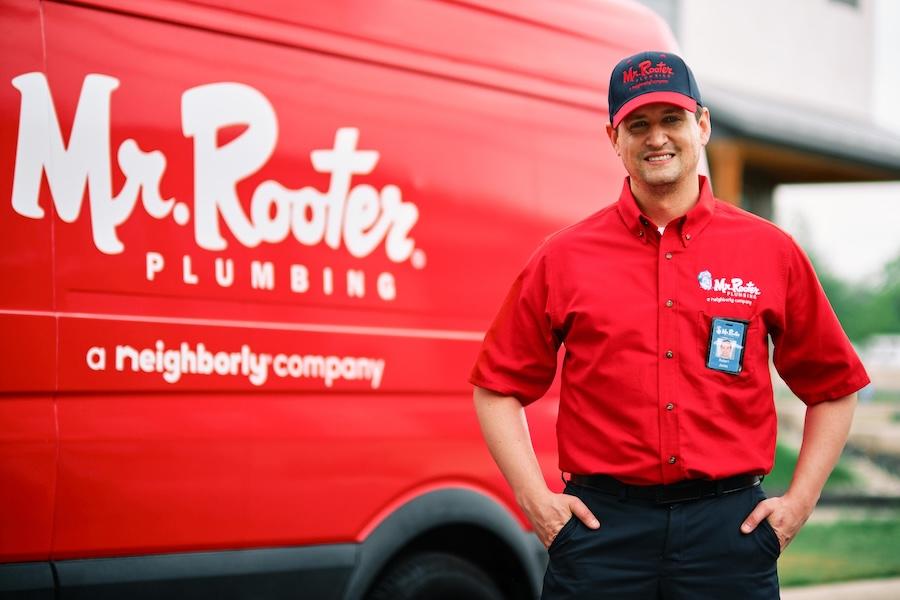
Every home relies on a fuel source, but when a gas line acts up, it turns into a safety concern fast. For gas line repair in Calcutta, Ohio, we focus on preventing hazards before they happen. At Mr. Rooter Plumbing, we walk you through the process so you always know what’s going on inside your system. Keep reading because a few precautions can spare you from an emergency.
Gas lines can run for years without trouble, but age still changes the metal inside them. Corrosion starts small. A bit of rust forms where moisture hangs around, and that weak spot can turn into a leak as time passes. Older fittings can loosen as well, especially when the line has been subjected to vibration from nearby work or soil that shifts. Natural gas is lighter than air, so it rises and spreads through a room fast. That makes detection a challenge. You might notice a smell, a light hissing sound near an appliance, or plants that start to wilt along the buried section of the line outside. Those small clues show that gas is escaping where it shouldn’t. In some homes, lines installed decades ago still serve modern appliances that draw higher demand. Stoves, water heaters, and furnaces built today use gas more efficiently, but they also need balanced pressure. Old lines may not keep up with that. The result is uneven performance, weak flames, or repeated pilot light failures. A plumber in Calcutta, OH can inspect the system from the meter to each connection, and trace how the gas flows and where it might falter. If corrosion or outdated materials show up, a gas line replacement in Calcutta might be the safer call. Replacing a worn section before it fails keeps your family and home out of harm’s way.
When a gas system starts to show trouble, guessing isn’t safe. Pressure testing gives straight answers by showing how well the line holds pressure once it’s sealed. A technician adds air at a set level and checks the gauge for drops. Any loss points to a leak or a weak area. Gas depends on a steady force to move, and the flow becomes uneven when a section can’t keep that level. In older homes, hidden joints or underground lines are common trouble spots, and this test can find them before they turn into emergencies. Once the source is confirmed, the next move is repair or replacement. Small leaks may only need a seal or a tightened fitting. If the test shows repeated pressure loss or several weak areas, a full gas line replacement can ensure long-term safety. For new builds or remodels, pressure testing also confirms the strength of a fresh installation. It’s the final step before hooking up appliances and turning the system on. That one step protects your investment and confirms everything is ready for daily use.
Every homeowner should know where their gas shutoff valve is and how to use it. It’s the quickest way to prevent damage if you smell gas or suspect a leak. The main shutoff is usually located near the meter. Turn the valve a quarter turn until it’s perpendicular to the pipe. That stops the flow immediately. If your home uses propane, look for the shutoff on top of the tank. Use the same quarter-turn method. Once it’s off, don’t try to turn it back on yourself. Wait for a professional to check the system and restore service in a safe way. It also helps to know how to shut off the gas to individual appliances. Many stoves, furnaces, and water heaters have small valves close by. These can isolate one problem area without shutting down the whole house. Each year, take a moment to look at those valves and make sure they’re clear of debris and easy to reach. A quick test run with a professional during your annual maintenance visit can confirm that everything still works as intended. This simple knowledge saves time during an emergency. It also gives peace of mind when you head out of town or close up a vacation property for the season.

Some early gas problems are easy to overlook. It’s tempting to ask for a quick repair, but temporary fixes leave long-term risks behind. A plumber can tighten a fitting or seal a small leak, but if the pipe is breaking down inside, the issue will return. Each new weak point raises the danger of a major leak. Gas under pressure exposes every flaw. Real safety comes from durable repairs. When an inspection uncovers corrosion, outdated materials, or signs of poor installation, replacement becomes the right call. A full gas line replacement removes hidden weak points and updates the system to current code. A new line supports modern appliances, resists moisture, and keeps stable pressure for decades. The same approach applies to new gas line installation in Calcutta. Whether you’re adding a gas stove, creating an outdoor feature, or extending a line, proper installation keeps the system dependable. Long-term care also relies on routine maintenance. An annual inspection can spot pressure changes or moisture buildup before they become major problems. You’ll avoid dangerous emergencies and keep your system working.
Gas powers some of the most important systems in your home. It heats water, cooks meals, and keeps the place warm through cold months. Knowing when to schedule gas line repair, testing, or replacement helps keep your system safe and prevents it from turning into a dangerous situation. If you ever smell gas indoors, leave immediately and call emergency services from outside. Once cleared to return, schedule professional service before turning anything back on. No leak is too small to ignore. For those maintaining older homes, a full system inspection by a plumber gives clear answers about your line’s condition, prevents risk, and extends the life of your equipment.
Mr. Rooter Plumbing has the experience and equipment to handle every part of your gas system, from quick leak detection to full gas line replacement in Calcutta, Ohio. We handle gas line repair, testing, and new gas line installation with strict safety standards and local code compliance. If you suspect a leak, need pressure testing, or want to upgrade your system, contact us today to schedule your inspection.